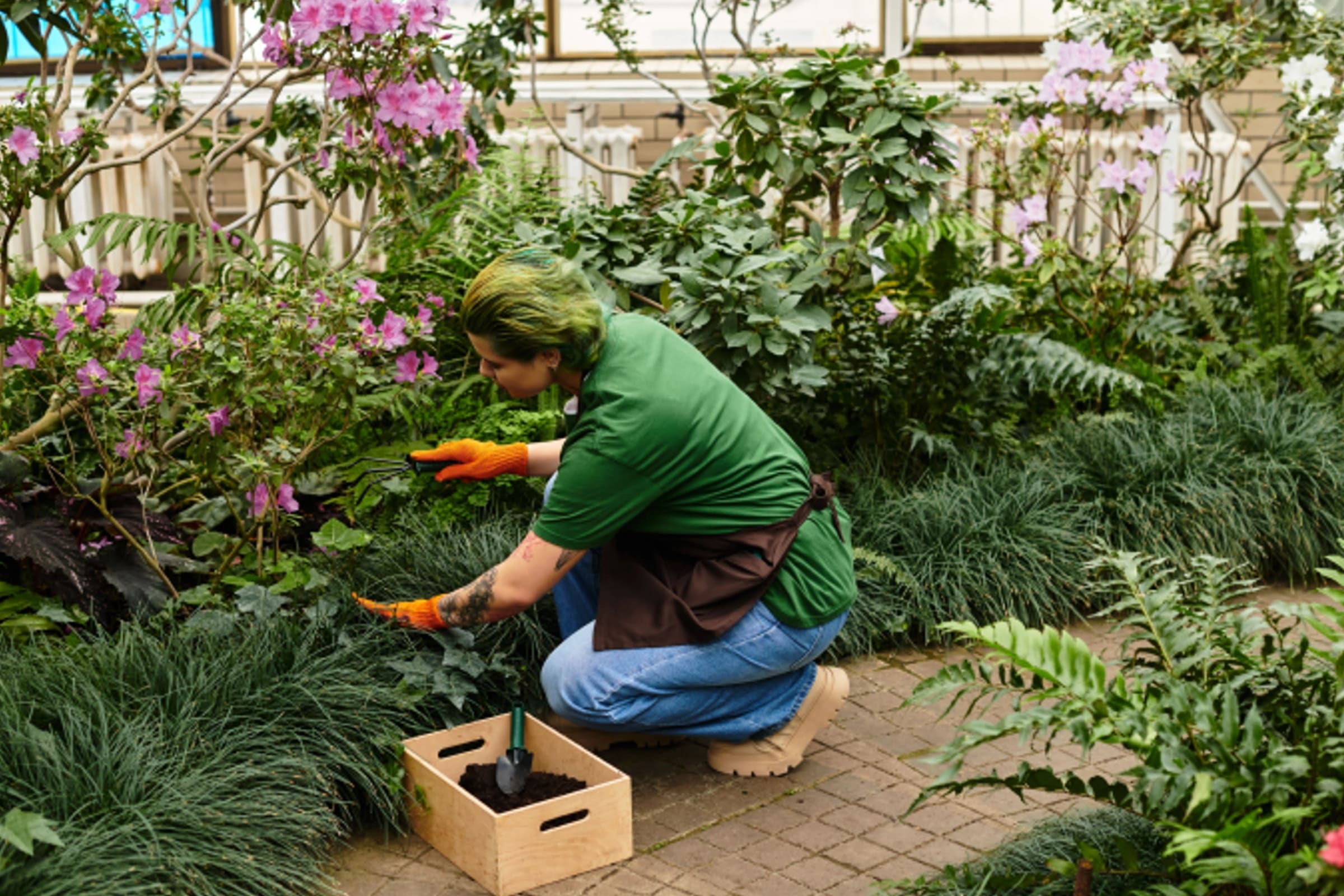Cultivating a lush, thriving garden isn’t just about boasting vibrant blooms or juicy tomatoes—it’s about nurturing an ecosystem that flourishes in harmony with nature. Sustainable gardening practices help reduce environmental impact, conserve resources, and promote biodiversity, all while yielding healthier plants and more resilient landscapes. Whether you have a sprawling backyard or a sunny balcony, adopting green-thumb habits can turn your patch of earth into a mini wildlife refuge and a source of fresh, nutritious food. Let’s dig into the dirt and explore practical, eco-friendly strategies for every gardener
1. Plan with Purpose: Site Selection and Design
Before you grab a trowel, take time to observe and plan:
- Assess Sunlight and Soil: Map your garden’s sun exposure—full sun, partial shade, or full shade—and conduct a simple soil test (pH and texture) to understand its composition.
- Native & Adapted Plants: Choose species that thrive in your local climate and soil. Native plants require less water and fertilizer and provide crucial habitat for local wildlife.
- Companion Planting & Guilds: Combine plants that benefit one another—tall sun-loving crops can shade heat-sensitive lettuces, while nitrogen-fixers like beans enrich the soil for heavy feeders like corn.
- Permaculture Principles: Embrace zones and layers. Place your most-used herbs and veggies near the kitchen door (Zone 1), fruit trees and larger plantings a bit farther out (Zones 2–3), and wild/native areas at the perimeter (Zones 4–5).
A well-thought-out garden layout maximizes productivity, reduces maintenance, and creates a dynamic, resilient ecosystem.
2. Build Healthy Soil: The Foundation of Sustainability
Soil is a living entity teeming with microorganisms, fungi, and invertebrates. Healthy soil leads to vigorous plants:
- Composting: Turn kitchen scraps, yard waste, and paper products into rich humus. Aim for a balanced mix of “greens” (nitrogen-rich materials like vegetable peelings) and “browns” (carbon-rich materials like dried leaves).
- Mulching: Apply 2–4 inches of organic mulch—straw, wood chips, leaf mold—around plants to suppress weeds, retain moisture, and gradually feed the soil as it breaks down.
- Cover Crops & Green Manure: In fall or winter, sow cover crops like clover, rye, or vetch. These protect against erosion, build organic matter, and “fix” nitrogen in the soil. In spring, cut them down and work them into the soil.
- No-Dig & Sheet Mulch: Instead of turning the soil (which can disrupt soil life), layer cardboard or newspaper over weeds, then add compost and mulch. Over time, worms and microbes cultivate rich, friable earth beneath.
By fostering soil health, you’ll reduce the need for synthetic fertilizers and build a resilient garden foundation.
3. Conserve Water Wisely
Water is precious—especially in drought-prone areas. Use strategies that stretch every drop:
- Drip Irrigation & Soaker Hoses: Deliver water directly to roots where it’s needed, minimizing evaporation and runoff.
- Rainwater Harvesting: Install rain barrels or cisterns to collect roof runoff. Use the stored water for irrigation during dry spells.
- Smart Timing: Water early in the morning or late in the evening when temperatures are cooler to reduce evaporation.
- Hydrozoning: Group plants with similar water needs together. Xeriscaping principles (dry-tolerant landscaping) apply beautifully to ornamentals and edible gardens alike.
Implementing water-wise techniques saves money, reduces strain on municipal systems, and keeps plants healthier.
4. Embrace Biodiversity: Gardens as Mini Ecosystems
A diverse garden is a strong garden. Encouraging a variety of plants and wildlife balances pests and pollinators:
- Pollinator-Friendly Flowers: Plant native blooms like coneflowers, milkweed, and salvias that provide nectar and pollen for bees, butterflies, and hummingbirds.
- Habitat Features: Add a small water feature (birdbath or shallow dish), rock pile, or log stack to offer shelter and moisture for beneficial creatures.
- Avoid Monocultures: Interplant fruit trees, shrubs, vegetables, and flowers. This diversity reduces pest outbreaks and fosters a resilient garden community.
- Beneficial Insects: Encourage ladybugs, lacewings, and parasitic wasps by planting insectary strips of dill, fennel, and yarrow. These predators prey on common pests like aphids and caterpillars.
By fostering habitats, your garden becomes a vibrant tapestry of interdependent species that keep each other in check.
5. Natural Pest and Disease Management
Sidestep harsh chemicals by using integrated pest management (IPM):
- Cultural Controls: Rotate crops annually to prevent soil-borne diseases and pest cycles. Proper spacing and pruning improve air circulation, reducing fungal problems.
- Mechanical Controls: Hand-pick pests like slugs, caterpillars, and beetles. Install physical barriers—row covers, fine mesh—to protect young plants.
- Biological Controls: Introduce beneficial nematodes to combat soil pests or apply Bacillus thuringiensis (Bt) for caterpillar control—both safe and target-specific.
- Botanical Sprays: Homemade sprays of neem oil, insecticidal soap, or garlic-pepper tincture can deter or suffocate soft-bodied insects.
Consistent monitoring and early intervention keep pest populations below damaging thresholds without harming non-target organisms.
6. Reduce, Reuse, Repurpose
Sustainable gardeners are resourceful:
- Upcyclable Containers: Reuse old buckets, wine barrels, and wooden crates for planters. Drill drainage holes, add coconut coir or straw at the bottom, then fill with soil.
- DIY Plant Supports: Bamboo stakes, salvaged wire mesh, or even old ladders make effective trellises for beans, peas, and cucumbers.
- Seed Saving: Allow select annuals or open-pollinated crops (tomatoes, peppers, lettuce) to go to seed. Dry and store seeds for next season—preserving heirloom varieties and cutting seed costs.
- Green Cleaning Products: Keep your tools and greenhouse pristine with vinegar, baking soda, and castile soap instead of synthetic cleaners.
Creative reuse diverts waste and saves money—plus, it adds character to your garden.
7. Harvest and Store Thoughtfully
Enjoy the fruits (and veggies) of your labor long after the growing season:
- Succession Planting: Stagger sowing dates so you have continuous harvests instead of glut-and-bust cycles.
- Proper Harvest Timing: Pick herbs and greens in the cool morning for peak flavor. Harvest fruit when fully ripe to enjoy maximum sweetness.
- Preservation Methods: Can excess produce into jams and pickles, freeze blanched vegetables, or dehydrate herbs and fruits for long-term storage.
- Root Cellaring: Store root crops and hardy vegetables (carrots, potatoes, beets) in a cool, dark, moist environment like a cellar or garage.
By planning for harvest peaks, you reduce waste and savor homegrown produce year-round.
8. Seasonal Maintenance and Reflection
A sustainable garden evolves with the seasons:
- Spring Cleanup: Remove winter debris, inspect tools, and amend beds with compost.
- Summer Vigilance: Monitor soil moisture, pinch back blooms to encourage bushier growth, and scout for pests weekly.
- Fall Prep: Plant cover crops, divide perennials, and mulch tender plants before frost.
- Winter Planning: Review successes and challenges. Sketch next year’s garden map, order seeds, and service irrigation systems.
Regular care ensures your garden remains productive, healthy, and in tune with natural cycles.
9. Community and Education
Sharing knowledge amplifies impact:
- Seed Swaps & Plant Exchanges: Local gardening clubs often host events where members trade seeds, seedlings, and growing tips.
- Workshop Participation: Attend or lead workshops on composting, beekeeping, or organic pest control to deepen skills and network.
- School and Community Gardens: Volunteer or support youth-focused garden projects—instilling eco-literacy in the next generation.
- Online Forums: Platforms like regional Facebook gardening groups or specialized forums connect you with peers facing similar climate challenges.
Community engagement fosters collective resilience and spreads sustainable practices far beyond your own backyard.
Conclusion: Growing Toward a Greener Future
Transitioning to sustainable gardening isn’t an overnight transformation—it’s a series of intentional choices that build upon one another. By prioritizing healthy soil, conserving water, embracing biodiversity, and reducing waste, you’ll cultivate a garden that’s as kind to the planet as it is rewarding for the gardener. Every compost heap, rain barrel, and pollinator-friendly bloom contributes to larger ecological health. So roll up your sleeves, savor the process, and know that with each seed you sow and each eco-swap you make, you’re helping cultivate a greener planet—one garden at a time. Happy planting!
Article by Dreamstime



